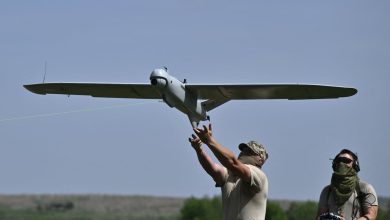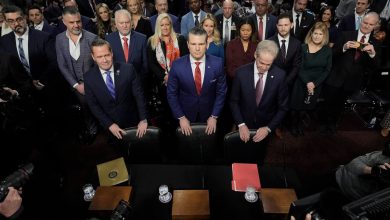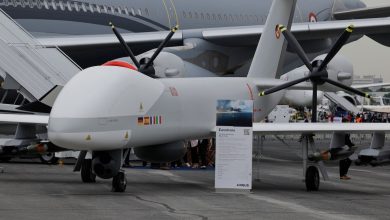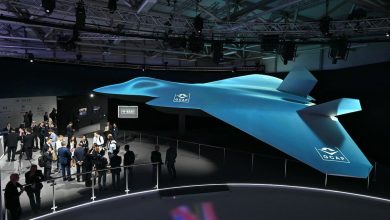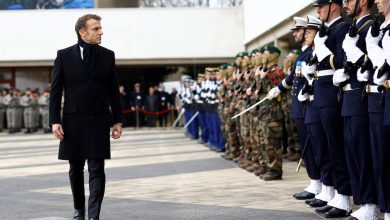Europeans start work on next-generation combat ship for the 2040s
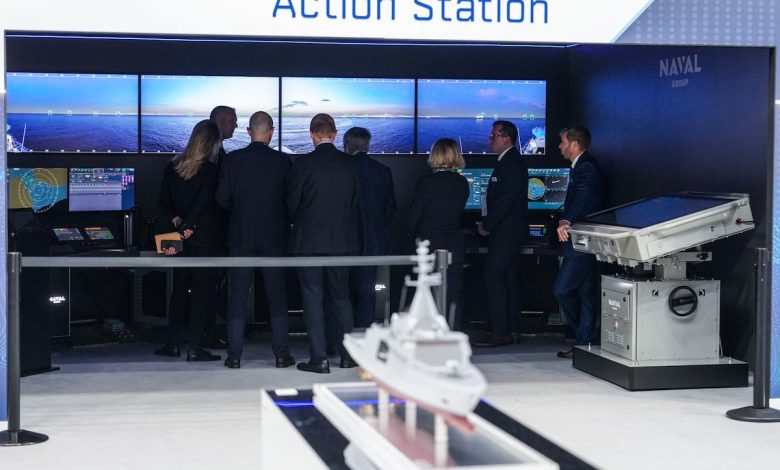
PARIS — The European Union has started work on a next-generation combat vessel that could enter service somewhere in the 2040s, and the bloc’s defense ministers may sign a letter of intent to pursue the project at a meeting in two weeks, the head of the maritime unit of the European Defence Agency said.
Six EU member states are “very much interested,” including four with bigger navies, Jürgen Scraback, who heads the maritime domain unit at the EDA, told Defense News at the Euronaval conference here, after participating in a panel discussion about the plans.
EU countries are estimated to need at least thirty combat ships in the future, though Scraback said he doesn’t believe all of those would be built within the European Combat Vessel program. The EDA official expects the program budget could exceed €20 billion ($22 billion) in 2024 prices.
“This new generation of vessels will be completely different from the vessels that we have now, because the naval warfare scenario is changing a lot,” said Fernando Miguélez García, chairman of the European Naval Industry Group (ENIG) within the European Aerospace, Security and Defence Industry Association, who was part of the panel discussion.
Design changes would likely entail having a mothership-type capability to carry drones into combat, he added.
RELATED
EU defense ministers in May tasked the EDA to come up with a concrete project proposal to discuss in November, according to Scraback. The agency held an initial meeting in July to gauge member states’ appetite, followed by a workshop in September to hammer out the high-level requirements for the future vessel.
The future vessel will need to be a compact ship capable of countering “a full spectrum of threats,” including new ones from small UAVs to hypersonic anti-ship missiles, said Ignacio Cuartero, director of the EU Military Staff Concepts and Capabilities directorate within the European External Action Service.
EU defense ministers will meet on Nov. 19 to discuss the project, “so in two weeks’ time, we will get a clear indication what the member states want,” Scraback said. He said Spain and Italy are interested in signing on, while France is not sure yet.
Requirements for the future vessel include a reduced crew, and therefore a high degree of automation, as well as unmanned systems in a range of sizes, according to Scraback.
Based on feedback from member states, the requirement could be for a vessel with a displacement of 8,000 metric tons or more, Scraback said. That’s based on factors such as modularity, the need to embark containerized payloads as well as the ability to equip many small as well as big unmanned systems, according to the EDA official.
By comparison, France’s brand-new FDI defense and intervention frigate displaces 4,500 tons, while the displacement of the French-Italian FREMM frigates is around 6,000 tonnes. The anti-submarine warfare frigates ordered by the Netherlands will have a displacement of 6,650 tons, and Germany’s future F126 frigate will displace around 10,000 tons.
The next generation of combat vessels will have to be “smart ships” that incorporate technologies such as artificial intelligence and a naval combat cloud, according to Cmdr. Alfonso Carrasco of the Spanish Navy’s plans division. Modularity will be important to allow ships to switch between tasks, Carrasco said.
Hypersonic threats will require increased automation and AI to “drastically” reduce reaction time, as well as interconnectivity with other vessels and drones to increase detection capabilities, according to Miguélez García, the ENIG chairman, who is also representative to the EU and NATO for Spanish shipbuilder Navantia.
New directed-energy weapons such as lasers and rail guns will require different types of power generation onboard, including fast energy generation to power those weapons, he said. The future combat vessel will need to be built using new materials such as composites for stealth purposes.
The European naval industry is working to define its technological capability gaps, with the next step seeing how firms can collaborate to close those gaps, according to Miguélez García. The EU industry has “clear gaps” in areas including weapons and sensors, he said.
Companies specialized in weapons are working together to try to define the new types of armaments needed, and how to defend against those weapons, while another group is working on defining the digital architecture and the energy plan required, he said.
The EDA and member states are considering whether to make the future combat vessel a project within the EU’s Permanent Structured Cooperation (PESCO) framework, which would lock in a commitment by heads of state, Scraback said.
Rudy Ruitenberg is a Europe correspondent for Defense News. He started his career at Bloomberg News and has experience reporting on technology, commodity markets and politics.
Read the full article here

